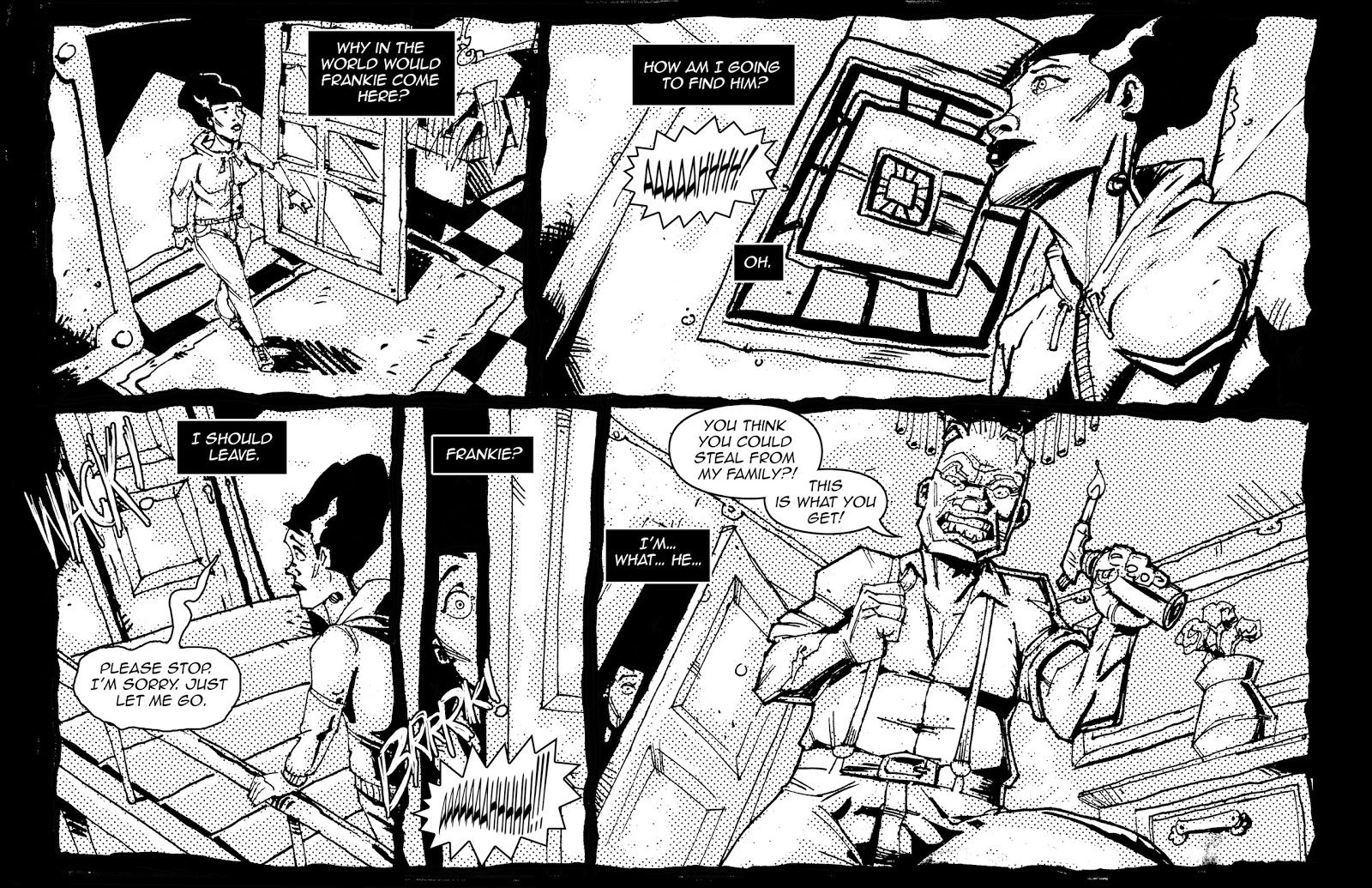
OUTSIDE THE PANELS #9: COMIC SCRIPT FORMAT, part 1: FULL SCRIPT
Let“s just dive right into to this because I know if you have been reading Outside the Panels this is something you want to learn. This has been covered before for various books and blog posts, but as usual, I plan on going more in depth on the little things.
Unlike film, television or stage scripts, there is no “right way”“ to write a comic script. Though, there are plenty of wrong ways”¦ Make sense? I“ll explain.
Before I really explaining I want you to remember that the point of your comic script is to communicate to your artist what exactly is going on in your head in terms of the story. Besides your creative team, nobody is going to see your script, unless you throw it out as a little freebie in the back of an issue or on your website. So, just know I personally do not believe in going into crazy detail of your panel/page action descriptions. I“m an advocate of letting your artist do what they get paid to do”¦ the art.
To begin, first know that there are two ways to write a comic script.
1. FULL SCRIPT, where the writer writes each panel description and dialogue.
2. PLOT FIRST, (commonly known as “MARVEL STYLE”“) where the writer writes the plot and story beats of the pages within a comic, sends it off to the art team to create the page as they see fit to properly transform the plot/story beats written by the writer into pages of art, and then when the art is complete the writer gets the pages of art back and fills in all of the dialogue, narrations, and captions. Personal preference, I always write in COURIER NEW at an 11 font size.
For this entry, I would like to write about FULL SCRIPT, mainly because it is the more elaborate and complicated of the two forms of comic script. This is the way I write all of my scripts. My best advice is, try your best to make every page of script equal one comic page. However, if you have to make your page of script exceed one page, NEVER let it pass two pages. You don“t want to slow your artist down, nor make them feel a lot of pressure, with wordy panel descriptions.
Each of my scripts look different depending on the artist I“m working with. The reason for that is because I always, ALWAYS, write to the strengths of the artist of the project. Some artists will need a bit of guidance as to the angle you want panels to to be seen from, as well as character placement and emotion within the panel. Some artists just need to know what characters are in the panel and what they should be doing –they may just get the emotion of the seen through the dialogue.
My goal today is to help you, a soon-to-be comic writer figure out a basic format to write a script. That being said”¦ well, written”¦ here is the script and page from this weeks page of my webcomic, C U NEXT TUESDAY at cunexttues.com, with art by Ibai Canales.  (Please excuse the format if the WordPress uploader does make it look a little wonky. Thanks!)
TUESDAY #2 – PAGE 13
PANEL 1: Let“s have TUESDAY sneaking into the door FRANKIE just went through.
TUESDAY (inner dialogue): Why in the world would Frankie come here?
PANEL 2: SHOT FROM THE GROUND, DIRECTLY UNDER TUESDAY“s FEET. TUESDAY looking up at a flight of very high stairs that wrap around the room.
TUESDAY (inner dialogue): How am I going to find him?
SFX (someone screaming)(off panel): AAAAAHHHH!
PANEL 3: SIDE SHOT. TUESDAY ascending the stairs nervously.
SFX (someone screaming): WACK!
TUESDAY (inner dialogue): I should leave.
SFX (someone screaming): AAAAAHHHHH!
PANEL 4: SIDE SHOT. TUESDAY ascending the stairs. She“s more nervous.
SOMEONE (off panel): Please stop. I“m sorry. Just let me go.
SFX (someone screaming) (off panel): AAAAAAAHHHHH!!!
FRANKIE (off panel): You“re not making this any easy for ya“self.
TUESDAY (inner dialogue): Frankie?
PANEL 5: SIDE SHOT. TUESDAY““s scared, outside a door. The door is slightly open. FRANKIE with his sleeves rolled up and his jacket off, he should look a little sloppy, maybe his shirt is half tucked?
FRANKIE: You think you could steal from my family?!
(connected word balloons)
FRANKIE: This is what you get!
TUESDAY (inner dialogue): I“m”¦ What”¦ He”¦

Notice how I kind of called the shots and certain things change? That means Ibai added his artist input and did what he had to do to make the visual part of the story work. Do you see how my script of PANEL 5 mentions how FRANKIE should look, but the actual PANEL 5 has him looking a bit different? That is the freedom you should give your artist. He made my panel concept so much better by just having fun. I didn“t request a blow torch, nor a vase behind FRANKIE, but I“m glad Ibai put them both into the panel.
Most of my script is loose, unless I really, REALLY, want to see something on the page. Other than those particular crucial moments, I let Ibai do whatever he wants to do with the art. It“s our project and together we have created a really great partnership that is all about “give and take”“.
I hope this all helps! Next week we will talk about FULL SCRIPT style of scripting comics!!!
Good Luck!
Sal Brucculeri
@SalveyB, cunexttues.com, soulmen.launchrock.com, salbrucculeri.com, aa88press.com
Author Profile
- Sal Brucculeri is comic book creator, writer, and editor with an passionate determination to create quality comic books. Sal currently publishes a successful weekly webcomic, C U Next Tuesday, featuring the Bride of Frankenstein’s Monster. He is also the editor of The Devil You Know. Sal is also the writer of the successful Kickstarter project, Ninja Baseball Man, Vol. 1. In addition, Sal, along with Frank Mula, is the co-founder of the small-press publishing company, AA88 Press.
Websites: cunexttues.com, aa88press.com, salbrucculeri.com
Latest entries
 ColumnsMarch 7, 2016CREATOR SPOTLIGHT: CULLEN BUNN
ColumnsMarch 7, 2016CREATOR SPOTLIGHT: CULLEN BUNN ColumnsJanuary 26, 2016Sal Chats with IDW Managing Editor, David Hedgecock
ColumnsJanuary 26, 2016Sal Chats with IDW Managing Editor, David Hedgecock Comic BooksNovember 1, 2015REVIEW: NY Comic Con 2015
Comic BooksNovember 1, 2015REVIEW: NY Comic Con 2015 ColumnsOctober 13, 2015OUTSIDE THE PANELS #17: THE TRUTH ABOUT KICKSTARTER
ColumnsOctober 13, 2015OUTSIDE THE PANELS #17: THE TRUTH ABOUT KICKSTARTER










